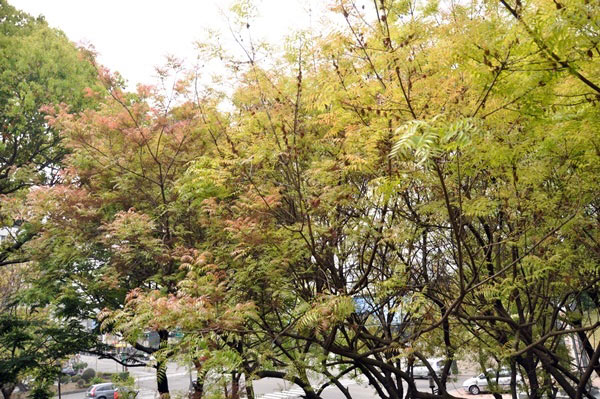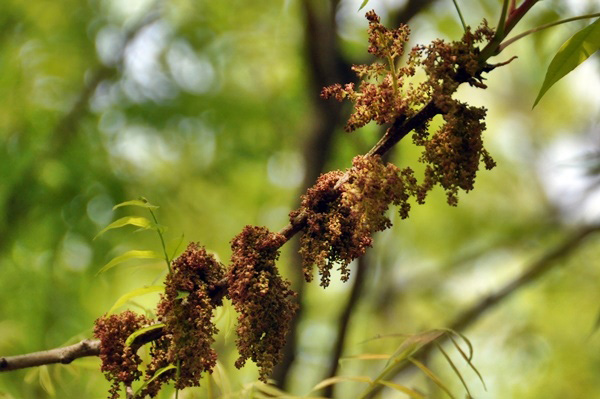Pistacia chinensis
The Chinese pistache is a native plant of Taiwan, found in the low-elevation areas of central and southern Taiwan. Due to its attractive tree shape and the beautiful red color the leaves turn in low temperatures, it has high ornamental value and is an important landscape plant. The wood is of excellent quality, but the heartwood of older trees is prone to rot, so it is also known as “rotten heart wood”.
The main building area of the museum is connected to the Botanical Garden by Xitun Road, and on the side of Xitun Road that is near the Botanical Garden, the street trees are the Chinese pistache. The Chinese pistache is a dioecious, semi-deciduous tree. It may not shed all of its leaves due to low temperatures in autumn and winter, but when new buds sprout in spring, the old leaves will be renewed at the same time. Male flowers also emerge with the new leaves, and the pollen released during this time often covers the surfaces of vehicles parked under the tree with a thin layer of yellow powder. As the new buds develop, the male flowers gradually wither, which is why you can see withered yellow inflorescences mixed in with the new leaves.
Chinese pistache is often grown as street trees and landscape trees in gardens. In addition, it is also a high-quality timber. It has a hard texture and high density, with distinct growth rings. The sapwood is purple-brown, while the heartwood is dark green-brown, showcasing vibrant colors and beautiful patterns. After processing, it exhibits a lovely sheen, making it suitable for fine carved decorative materials in furniture such as vanities, plant stands, and walking sticks. It can also be used for high-end furniture and construction materials, and yellow dye can be extracted from it. The seeds have a high oil content, which can be pressed to produce lubricating oil and biodiesel, or further processed into soap. The tender leaves that sprout in spring can be harvested and pickled for consumption, or processed into tea. In traditional Chinese medicine, the leaf buds and bark of the Chinese pistache can be used as medicinal materials.

